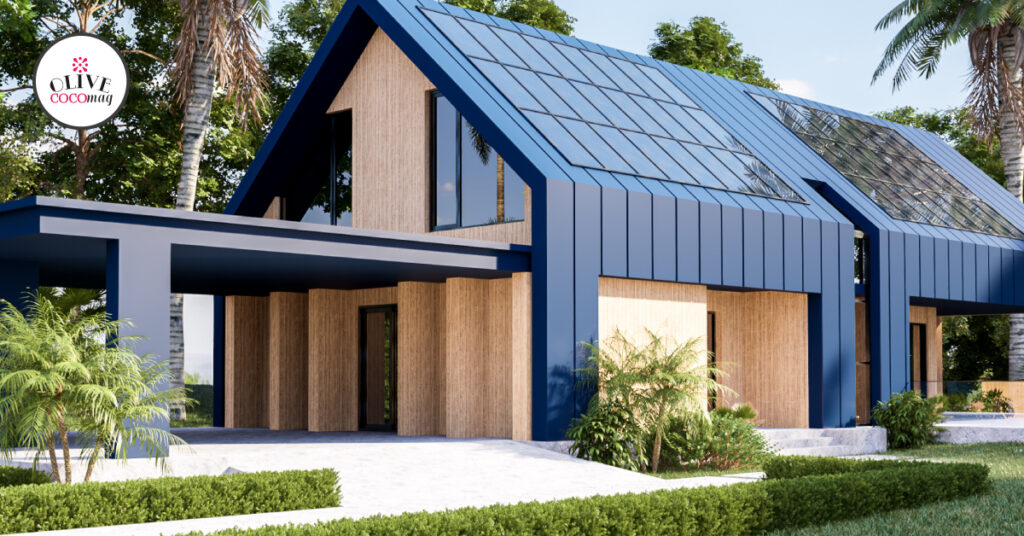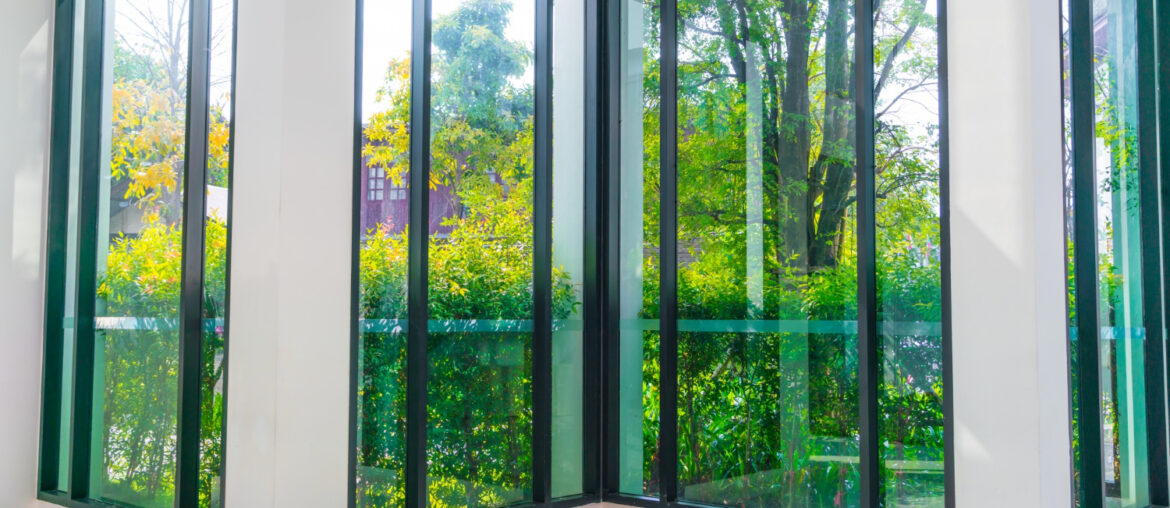Home window tinting for homes has emerged as a solution to the rising temperatures in hot seasons. Even though air conditioners can be used to keep the interior cool, the areas open to direct sunlight through windows would still get hot to touch. This can even make the air conditioning ineffective. Therefore, proper window tinting can help reduce your electricity bills, improve safety and enhance the appealing nature of your home. The types and benefits of window tinting for homes would be discussed here.

Table of Contents
Types of Residential Window Tinting
Choosing the best type of window tint could be quite confusing for anyone who does not have a proper idea about the types of films and the benefits they offer. So let’s see what the types of window tint films available are.

- Solar Window Film
The solar window film can block up to 99% of UV radiation that tries to penetrate the windows. Sometimes it is also known as UV window tinting and ideal for anyone looking for energy efficiency. It regulates indoor temperature and increases indoor comfort as the interior stays cool during summer and warm during winter. It also reduces glare and avoids fading of furniture and fabric inside the home. Having this type of residential window tinting film does not affect the color of your glass or make it any darker. The films are available in neutral tones and can be purchased in a range of colors, from silver to copper.

- Security Window Film
This window film provides protection and is the thickest out of all window films. It is designed with heavy-duty polyester, which makes it difficult to be smashed by robbers or heavy winds. These window tints are usually clear or silver in tone. They are not good at reflecting heat.

- Decorative Window Film
This is the thinnest type of film and is mainly intended to add aesthetic appeal to the house. These come in various styles and appearances that are ideal for interior designing while ensuring privacy.

Moreover, there are some other types of window films that have been developed in advanced mechanisms of different characteristics.
- Metalized Film
This is a strong type of window tint that is becoming popular in recent times. This is made of small metallic pieces and reflects off heat and light. This makes the window stronger, thicker, and durable than the normal dyed films. The glass would be safe from shattering and would not fade fast either. Even though the film would appear to be as any other film from the inside, it would look reflective like a mirror from the outside. This is ideal for privacy as the inside is not visible.

- Carbon Film
This is a non-reflective film as carbon particles are used on the film. It creates a perfectly finished look on the windows and ideal for aesthetic nature. Carbon tints would not completely block off the sunlight. Therefore, the inside would be visible up to some extent. It blocks off 40% infrared radiation and may have limited heat reduction ability.

- Neutral Window Film
Neutral window films are a great type of window film that would allow plenty of natural light to reach your home while blocking the harmful rays. Rooms and interior would be naturally illuminated. However, glare or fading of furniture would not occur due to the blocking of UV rays. The tint may be barely noticed from the outside. The windows will look as if they were not tinted, and this tint is ideal for people who do not want to darken their home windows.
- Florida Tint Laws For Vehicles 2021
- Connecticut Tint Laws For Vehicles 2021
- ReTinting Car Windows: Why, How, And When?
- Florida Window Tint Laws: Things You Need To Know Before Tinting
- Tennessee Window Tint Laws – 2021
Types of Glass Requirements
When you are installing window tints, it is necessary to consider the type of glass so as to avoid unnecessary thermal stress caused by the glass. The window glasses basically come in flat (annealed), heat-treated, or insulated forms. The insulated glass contains two layers of glass with a layer of air or gas in between.

These three types of window glasses absorb different amounts of heat. For security and decorative tints, minimal thermal stress is placed on the window glass it blocks only a small amount of heat. Any window glass can be used with these films.
Solar or UV films have a higher heat absorption rate and capacity. Therefore, the thermal stress of the glass would be increased and could even result in cracking of the glass. So, it is recommended to avoid the installation of this film in flat window glasses that have an absorption rate of over 50%. These films should not also be installed on insulated glass that has had seal failures or older than ten years. These conditions are elaborated on below.
The high rate of heat absorption by the window films can crack the window glass in the following situations.
- Clear annealed glass thicker than 3/8 inch or have a rate of heat absorption over 50%
- Tinted annealed glass more than ¼ inch thickness
- Insulated glass older than 10 years or have had seal failures
Always make sure to check with the manufacturer’s guidelines for any clarification of compatibility in window films and types of glasses.
Installation of Window Tinting

You can get your window tint job done by a professional easily. It would be more costly and you would need to fix your time of installation with their tight schedules. You might even have to wait for a long to get the work done. So, you might wonder why you don’t do it yourself. If you are enthusiastic about doing things by yourself and have handy skills and patience, then this is for you. Let’s get on to work.
What you need:
- Spray bottle with a soapy solution
- A utility knife with a long blade
- A squeegee or a hard edge
- Window tint film
Procedure:
- Clean the windows before as preparation work. Do not let any dust or debris be leftover on the windows.
- Create a mild soapy solution with baby shampoo and bottled or distilled water. Spray the soapy solution over the glass. You may even dip a lint-free soft cloth in this solution and wipe down the window glasses gently, leaving the soapy mixture on the surface of the glass.
- Cut out a part of the tint film one inch longer on every side than the specific window you need to tint. Make sure not to tear or scratch the film.
- Remove the adhesive cover from the tint film and carefully stick it on the window glass. Applying the film from top to bottom. Take good care not to leave any finger marks on the film.
- Gently press a squeegee or hard edge on the film and move it along the window. This is done to remove any air bubbles trapped between the glass and the film.
- Leave the film to cure for about a week. Usually, it takes around eight days for the window tint to cure completely.
During this process, you need to be careful to avoid any dust or debris getting contaminated in between the glass and film. Also, do not press the squeegee too hard or you would scratch and damage the tint film. If you prefer to avoid any risk, we recommend you to go for professional consultation and get it done by an experienced technician.
Homeowner and Renter Friendly Options
These options are with the consideration of the lifespan of the window film. There are three types as temporary window films, semi-permanent and permanent films. The temporary tint films can be removed easily. Usually, decorative films are of this type. The semi-permanent varieties are also removable, but they leave behind a residue from the adhesive. The permanent films are not designed to be removed. Security and solar films are mostly either semi-permanent or permanent.
The temporary window films are ideal for people who don’t stay in the same apartment for a long time such as renters. Homeowners can go ahead with semi-permanent or permanent window tint films.
Advantages of Tinting Home Windows

- Curb Appeal
This in general is how the visitors and passers-by see your house across the street. Everyone likes to have a beautiful, elegant house that looks valuable. The easiest way to make your house appealing and impressive is to make improvements to the exterior. In addition to painting walls, gardening, landscaping, and architectural designs, the concept of window tinting also takes a special place. This creates an enhanced appearance in your home that would last for years.
- Privacy
Having tinted windows makes it more difficult for people to see the inside of your home. Therefore, it secures privacy. Since the outside light hits back on the tinted surface, a mirror-like reflective appearance is created. This can also be used as a decorative product for the above-mentioned curb appeal. The reflective films come in a wide range of colors and patterns that include patterns or opaque natures. You can also get clear films without the reflective nature.
- Security
Natural disasters such as heavy winds gushing with various branches and debris might happen in certain areas of the country. During any such impact on the window glass, the tint film would hold the glass together even if it breaks. The shards will be held up without shattering and causing harm or injuries. Even during a forceful entry of intruders, the glass will not be broken as easily as when without a window film. So, this is an added advantage.
- Economic
If you installed the right window, it would indirectly save your bills. During warm seasons, the window films would block away a considerable amount of heat from entering the house. Thus, the amount of air conditioning you need to keep the interior cool would be less. So your air conditioner can go easy and the result will be seen as a reduction in your electricity bill. Proper window tints would also keep away the harmful radiation that would fade your curtains, furniture, and carpets. Since they are not needed to be renewed very often, you can save the cost. Pay once for the right window tint film and you would be saving for the rest.
- Glare Reduction
It is a common occurrence that we find it difficult to see digital screens of electronic devices such as television or monitors. This is because the amount of light in the surrounding is very high and creates glare on the eyes. Blinds or curtains can be used as a preventive measure for this but would result in making the place darker than needed. Home window tinting can both minimize the glare and optimize the required lighting by allowing natural light into the house. Having natural sunlight inside your home is more effective than using blinds and lights. Studies have shown that enhanced natural light increases productivity.
- Solar Protection
This is the protection that you receive from harmful UV radiation that might cause health conditions such as skin disorders. This would also damage the electronics and fabrics. Window tint films are able to give protection from this by blocking the harmful rays from penetrating the windows.
Disadvantages of Tinting Home Windows

- Warranty Restrictions
Sometimes, adding new residential window tinting films would void the warranty that you have over your windows. This is because some window manufacturers do not cover any potential harm caused to the windows due to the application of separate window films. This is because certainly, incompatible window tints might cause damage to the windows, which are beyond the possible guarantee of the window manufacturers. So, make sure to choose the best window tint film that is most compatible with your window glass.
- Reducing Too Much Sun’s Energy
Solar window tints may not be in your favor if you live in a cold and cloudy environment. This would block the sunlight, even more, creating a gloomy appearance in your home. So, in such an environment, the best option would be to go for decorative window films that do not have a large impact on the reduction of sunlight in your residence.
- Cost
If your house is large and has many windows to be covered with window films, then you might have to spend a lot on professional installation. This might even cost you few thousand dollars at the completion. However, this investment can be beneficial as you can reduce your electricity bills and upholstery depreciation.
Is It Worth It?
To decide whether tinting home windows is worth the investment, you need to weigh the pros and cons of home window tinting. When considering this, it can be identified that the benefits highly surpass the drawbacks. Therefore, it can be said that it is worth it. However, this might vary depending on the efficiency of the film you choose. Review the products and do your best in choosing the best type of window film for your residence.
With Window Films, Can You Clean As Before?

Yes, you will be able to clean your windows in the same way as you cleaned earlier. However, make sure not to scratch the window film when cleaning. Usually, the window films have a lifetime warranty and you are on the safe side if any problem arises.
Cost of Window Tint for Residence
An aftermarket window film can be bought for $2 to $4 per square foot if you are willing to install it yourself. A professional installation would cost something around $5 to $8 per square foot. That would be $27 to $54 for a single-window of 3’8” by 3’8” for doing it yourself. Therefore, it is evident that window films are usually cheaper than the other window treatments that are done to block sunlight.

The solar screens are fabric shades that absorb or reflect heat. These would cost an average of $40 to $280 per window for DIY installs. The cellular shades that are made of fabric coverings with honeycomb-shaped cells would typically cost around $45 to $220 per window for installing on your own. Resident window tints are much cheaper than these alternative sun-blocking applications.
Factors to Consider Before Choosing a Window Tint for Home

You might have gained an overall idea about the road topic of window tinting for homes. However, if you are going to apply window tints, you need to start from an exact place and clarify what you exactly want, and how you are expecting to do it. Therefore, we have compiled some important factors that you need to consider when choosing the ideal window tint for your home. So, let’s see what these factors are.
What are your window tinting expectations?
Ask yourself what exactly you need. Figure out what are the necessities you need out of the abilities of window films. For your convenience, they are listed as follows:
- Block UV radiation
- Improve energy efficiency
- Enhance security
- Reduce indoor glare
- Better temperature regulation throughout the year
- Reduce fading of furniture and curtains
- Alternative to window replacement
- Improved aesthetic appeal
Available types of window tint
There would be many window types available in the area you live. You need to choose whether you need proper protection or just for decorative purposes. The general types are listed as follows and you may choose your preference from them.
- Ceramic
- Spectrally-selective
- Dual-reflective
- Low emissivity
- Neutral
- Safety & security
- Atmosphere exterior
Limitations on budget
It can be deflective when you see everywhere as it is a good investment and that it is alright to spend more on your window tint. However, it is you alone who needs to make the decision of how much you can actually afford to invest and how much you are willing to spend on this. Make sure to balance between quality and affordability. You can even try it by getting a cost estimation from a dealer for better clarification.
What are the types of window glass you have?
Identify what type of window glass you have. Since you do not want to spend on fixing new window glasses, make sure to check what type of window film would be compatible with your window glass. If they are not compatible, it would end up cracking your windows.
Warranty on windows
Check whether you have a warranty on your windows. If you have, then check with your window manufacturer whether they cover tinted windows since most manufacturers don’t.
Determine the exact windows you want to tint
After all, you might not want to have all the windows in your house to be tinted. So, decide the exact windows you need to get tinted. This would help you bring down the concerns and specify the type of tint you need.
Hire an installer or DIY?
Finally, are you planning to hire a professional installer or do it yourself? This might even be linked with your budget. You can save the cost of labor if you can give it a try yourself. However, if you are concerned about getting wrinkles, bubbles, or contamination in the film, then you are recommended to get the job done by an experienced technician.
Choosing the product
After all these concerns and when going to purchase the product, it is always to go through the reviews. You can find many feedbacks from users on the internet. It is always better to see what their ideas are since you have no prior experience with the product.








